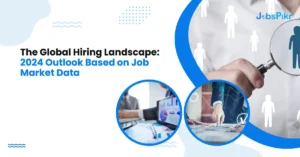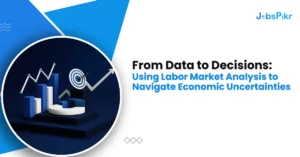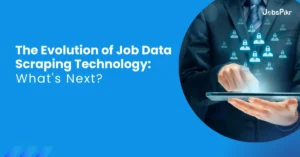The workforce is the core of all businesses. With workforce planning, your organization can enjoy great benefits in terms of the organization’s profitability as a whole. And, advanced workforce planning analytics have been introduced as a well-known technique to make sense of organizational data. It can guide you to have the best HR strategies.
Analytics offer HR professionals a deeper understanding of current movements, best ways forward, and future shifts. The global workforce is seeing a rising demand for new types of expertise and waves of skill shortage. Thus, workforce planning analytics will help in staying ahead. With a well-articulated workforce strategy, HR teams and the organization can stay updated with the most dominant trends.
What is Workforce Planning and How Analytics Play a Role in the Process?
Workforce planning is a way to assess workforce needs. Companies make yearly talent forecasts to gauge how many hires are required in a role. These estimates happen before the fiscal year ends and is a part of the budget planning. Workforce planning lacks the flexibility to stay competitive and agile in a dynamic and ever-evolving labor market.
The modern-day data-driven workforce focuses on the future by gauging the current recruitment requirement and molding how the need can evolve. In present-day workforce planning, workforce planning analytics plays a major role.
With workforce planning analytics, it becomes for your organization to collect and analyze to make an informed decision in the workforce planning process. It will help you come up with a strategic plan that can address the workforce challenges. The data-focused approach will help companies to match the talent pool with their talent forecast to get a realistic idea about the labor market.
The combination of workforce planning and workforce planning helps an organization to predict future leaders better. They can also create a successful plan to hire the right talent.
How Workforce Planning Analytics is Helping Organizations?
In this section, we are going to talk about the ways your company can leverage workforce analytics to stream workforce planning.
1. Analyze Performance Data to Learn About Talent Gaps
With performance management information, you can get insight into the requirements of every department, the capabilities a department needs, and underutilized resources, if any. It will help you learn who can fill up the gaps with upskilling. A small team might need stronger leadership to help in learning and for sharpening member focus, or else an employee might be shuffled from one department to the other to find the right place. It shows a lack of planning and poor usage of the existing resources.
Analytics can help in identifying the anomalies and patterns telling the HR professionals where employees need training or if they have to hire new talent.
2. Improves Employee Performance and Retention
With workforce planning analytics, organizations can draw out their top performers. Thus, they can foster robust talent recruitment and employee retention programs. You have to ensure that there is a proper workforce to accomplish business objectives and goals.

Moreover, the performance data of an employee can be used for hiring managers to understand what can motivate the top talents of a company. With this data, you can not only get better insights about your employees but also create strategies for boosting employee morale. This, in turn, fosters engagements and helps with employee retention.
3. Solve Labor Problems
The teams in your organization might be putting in weekend efforts or overtime hours. This implies there is a demand problem that has to be resolved. Apart from a labor shortage, it also indicates burnout of the current workforce. It can lead to low engagement and a poor bottom line.
By using analytics, your HR teams can meet the increasing demand of labor to a certain time of the year, calendar events, or seasonal change. Therefore, HR professionals can use the milestones in their annual workforce planning and preparation for the shortage early on. Thus, it prevents employee burnout.
4. Ensure Employee Engagement and Satisfaction
Attracting employees and then engaging and retaining top performers is of primary importance for an HR professional. As a matter of fact, a large aspect of workforce planning is to create a strategy to identify top talents and engage them.
If employee surveys and feedback are fed into the analytics, it will help in highlighting the problematic areas in the workplace. Your organization’s HR can also take data from attendance modules, turnover rates, and productivity measures to get an idea about employee satisfaction. HR professionals can use these data to implement employee engagement efforts for maximizing retention.
5. Better Hiring Decisions
Workforce planning analytics helps with predictive analytics. It will enable HR to make a better decision on the basis of the historical data. Using a great HR analytics tool can make all the difference. It can help the HR department hire the best candidate from the data they receive.
For instance, if your company hires 20 candidates and 10 of them are from a specific background that failed at their job role. In that case, HR can avoid hiring individuals from the same background.
With workforce planning analytics, recruiters get to know more about a candidate through their applications, online resume database, and social media profiles. They can understand the attributes and traits related to a specific job role.
Bottom Line: Future of Workforce Planning Analytics
Even though workforce planning analytics come with such great benefits, many companies are slow to adopt them. This is mainly because data analytics isn’t yet an area of expertise for many workforces and HR professionals.
No doubt, analytics helps workforce planning initiatives by providing information that might otherwise stay hidden. From personal complaints to ineffective business models, from unfulfilled skill requirements to engagement program errors, the challenges can be detrimental to an organization in the long term. In recent times, HR has moved into an era of proactive workforce planning that runs on data. So, analytics can prove to be one of the most robust tools for HR teams. Workforce planning analytics gives deeper insight into the workforce to fuel evidence-based decisions.




